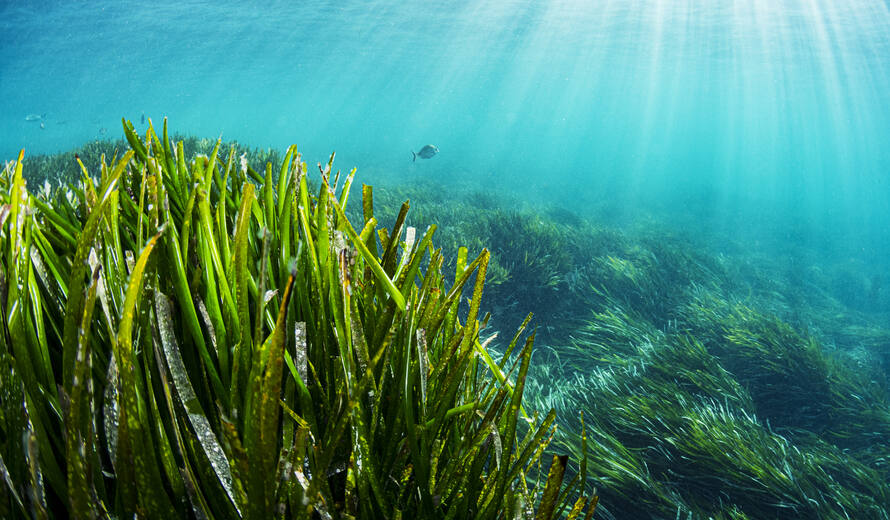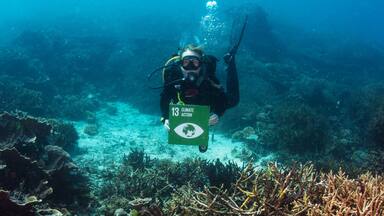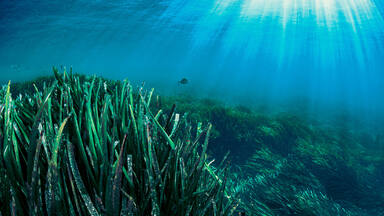New research demonstrates crucial role of World Heritage marine sites in fighting climate change
Last week, UNESCO released the first global scientific assessment of its World Heritage marine sites’ blue carbon ecosystems, highlighting the critical environmental value of these habitats. While these sites represent less than 1% of the world’s ocean, they host at least 21% of the world’s blue carbon ecosystem area, and 15% of the world’s blue carbon assets.
Over the last decade, scientists have discovered that seagrass meadows, tidal marshes, and mangroves, known as “blue carbon” ecosystems, are among the most intensive 'carbon sinks', meaning a natural environment which can absorb carbon dioxide in the biosphere. They help mitigate climate change by sequestering and storing significant amounts of carbon from the atmosphere and ocean.
"Found on the fringes of the world’s coastlines, blue carbon ecosystems play an important ecological role in nutrient and carbon cycling, as nurseries and habitats for a broad range of marine and terrestrial species, in shoreline protection, and in sustaining the livelihoods and well-being of local communities."
UNESCO World Heritage sites are places of Outstanding Universal Value, recognized by the international community as needing to be safeguarded for future generations. The report demonstrates that UNESCO marine World Heritage sites act as custodians of the largest blue carbon ecosystems in the world, making them more valuable than ever. Collectively, marine World Heritage ecosystems encompass an area of 207 million hectares, representing 10% of all protected marine area globally, as of 2020.
They include the Sundarbans mangroves (India and Bangladesh), part of the largest mangrove forest in the world; the Everglades National Park (USA) and Shark Bay, Western Australia, with the world’s largest documented seagrass meadows; the Great Barrier Reef (Australia), with the largest seagrass ecosystem in the world; and the Wadden Sea (Denmark, Germany, the Netherlands), which includes some of the world’s largest tidal flats. Marine World Heritage sites also host one of the oldest and largest living organisms on the planet, the seagrass meadows of Ibiza, Biodiversity and Culture (Spain).
This unique collection of marine ecosystems faces a wide range of challenges, from pollution, including plastic litter, to climate change. By quantifying the carbon value of these sites and recommending specific blue carbon strategies to conserve them, UNESCO’s research findings point the way for countries, regions, and local communities seeking to conserve these areas and pursue blue carbon strategies.
"Because they store so much carbon, blue carbon ecosystems become sources of CO2 emissions when they are degraded or destroyed. Protection and restoration of these ecosystems present a unique opportunity to mitigate climate change. By conserving blue carbon ecosystems, the large carbon stocks they have accumulated over millennia can be protected. As they are restored, they can regain their function as carbon sinks."
Conservation funding for blue carbon ecosystems in marine World Heritage sites, could be boosted through blue carbon strategies, whereby countries would earn carbon credits for demonstrating carbon benefits from the restoration and conservation of damaged ecosystems. Blue carbon strategies can restore vital ecosystem services and crucially help nations deliver on their commitments under the Paris Climate Agreement. To date, however, a limited number of countries have incorporated blue carbon strategies into their climate change mitigation policies.
The assessment was developed with data from World Heritage site managers, data published in scientific literature and The Global Carbon Project’s Global Carbon Atlas. It received support from King Abdullah University of Science and Technology (Saudi Arabia), the French Biodiversity Agency and the Principality of Monaco.





